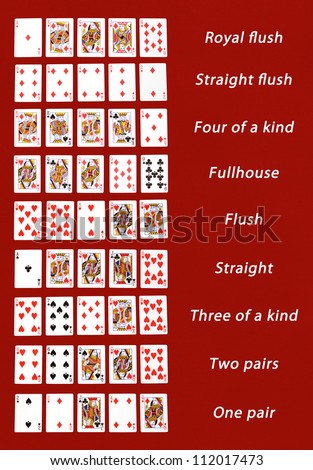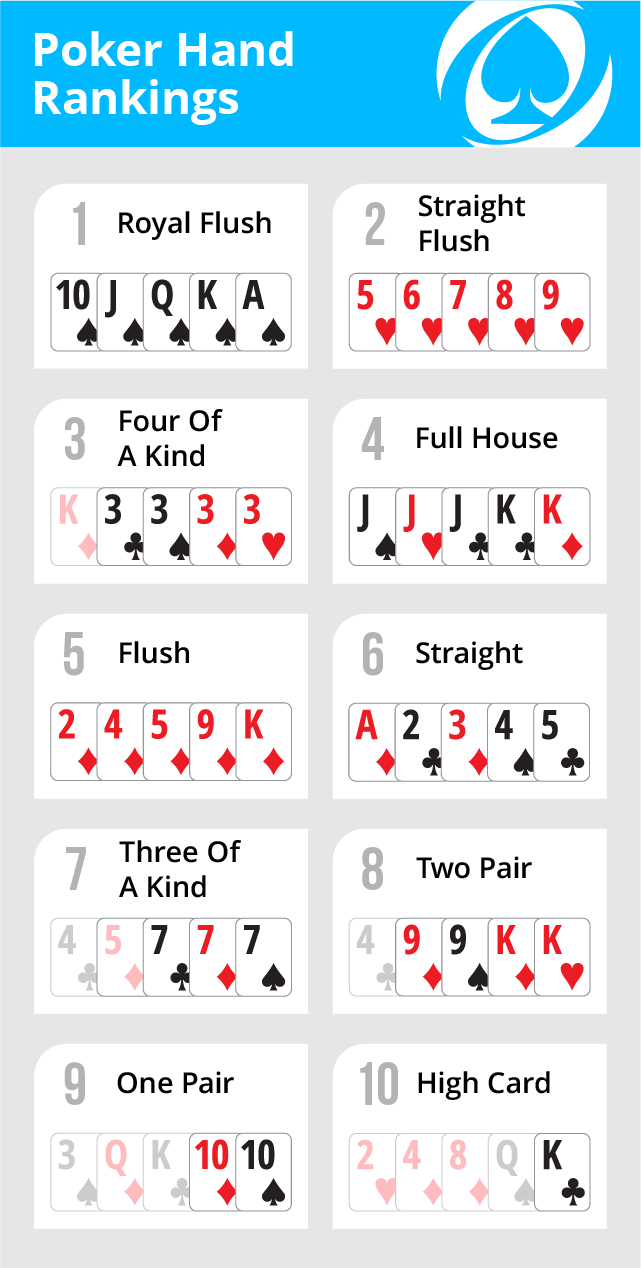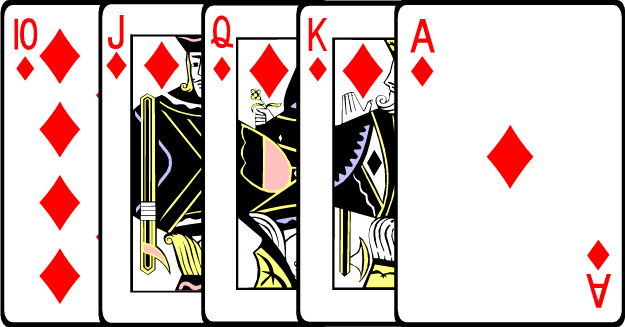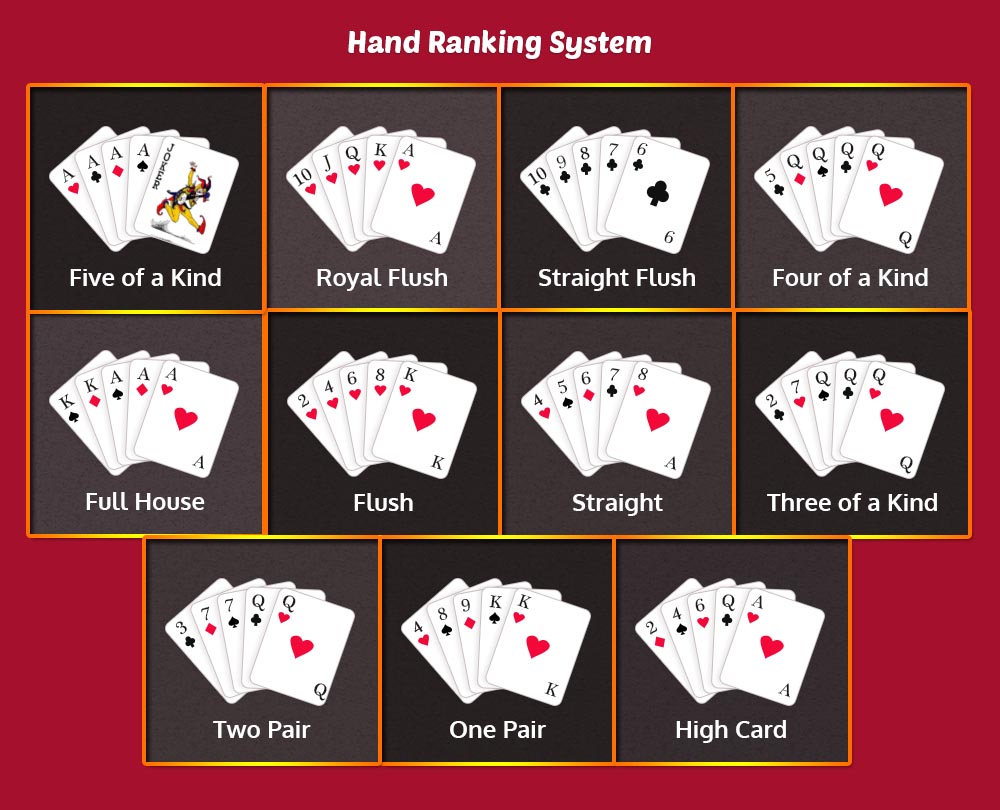Texas Holdem Poker Flush
Texas Holdem Poker Flush 4,4/5 6604 votes
– A tie break is not possible as two players cannot have a Straight Flush which is ranked the same in Texas Hold’em Poker. – If the dealer deals a Straight Flush via the 5 community cards, then the pot is split amongst all players provided no player holds a Royal Flush (meaning the Straight Flush is the strongest hand on the table). And the odds of making a royal flush is 649,739 to 1. This is correct assuming that every game plays to the river. In poker terms, the river is the name for the fifth card dealt, face-up on the board. In total, there are 2,598,960 possible poker hands with 52 cards. The flush that has the bigger highest card wins. If they are the same, compare the 2nd highest cards in each flush, and so on. In your case, player 2's J9862 beats player 1's J9532, because the 3rd highest card of player 2's flush is better. A flush is a relatively strong hand in Texas Hold’em with the highest possible flush being ace-high with all 5 cards in the same suit. The best Flush possible is the ace-high Flush: A♠J♠10♠3♠2♠ When it comes to flushes, the suits don’t matter.
Poker can be a fun card game for the family, or a serious competitive game in which the steaks can be so enormous, even selling your house wouldn’t cover the costs.
There are many variations of poker, with Texas Hold ‘Em being the most popular worldwide.
Below are a whole bunch of poker facts and statistics which help you understand the chances of wining and the odds of getting the cards you want.
Did You Know?
A pocket pair is cards of the same rank, which means if your two cards have the same number, from 2-2 all the way up to A-A, this is called a pocket pair.
- The odds of receiving any pocket pair is 5.9% which is 16 to 1. These are also the same odds of receiving a pocket pair of 2’s.
- The odds of receiving a specific pocket pair: 0.45% or 220 to 1 These are the same odds for receiving a pocket pair of A’s.
- The odds of receiving a pocket pair of A’s twice in a row is 0.002047% or 48,840 to 1.
- The odds of receiving a pocket pair of K’s is 0.9% which is 220 to 1.
- The odds of receiving a pocket pair of Q’s is 1.4% which is 73 to 1.
- The odds of receiving a pocket pair of J’s is 1.8% which is 54 to 1.
- The odds of receiving a pocket pair of 10’s is 2.3% which is 43 to 1.
- The odds of receiving a pocket pair of 9’s is 2.7% which is 36 to 1.
- The odds of receiving a pocket pair of 8’s is 3.2 which is 31 to 1.
- The odds of receiving a pocket pair of 7’s is 3.6% which is 27 to 1.
- The odds of receiving a pocket pair of 6’s is 4.1% which is 24 to 1.
- The odds of receiving a pocket pair of 5’s is 4.5% which is 21 to 1.
- The odds of receiving a pocket pair of 4’s is 5.0% which is 19 to 1.
- The odds of receiving a pocket pair of 3’s is 5.4% which is 17 to 1.
Poker Fast Facts
The total number of possible royal flush hands in a standard 52 card deck is 4.
And the odds of making a royal flush is 649,739 to 1.
This is correct assuming that every game plays to the river.
In poker terms, the river is the name for the fifth card dealt, face-up on the board.

In total, there are 2,598,960 possible poker hands with 52 cards.
The odds of getting four of a kind in Texas Hold ‘Em is 4164 to 1.
Casinos normally change decks after 15 minutes of steady play, so that the cards can always be fresh and unmarked, as many professional players would be able to remember the certain markings on cards and use that to their advantage.
This is only a basic overview of poker odds, there are many calculators online that can help solve the odds of getting certain hands, depending on what stage of the game you’re at, what cards you currently hold and how many people are playing.
Now you are familiar with these odds, you can use them to your advantage for a better poker strategy when you finally decided to play a tournament.


In Texas Hold-Em Poker the odds of making a royal flush hand is only 649,739 to 1.

A tie goes to the runner in baseball, but a tie in poker results in a split of the pot. Just what constitutes a tie can be confusing. Before you join a Sit-n-Go or play live poker you should brush up on what constitutes a tie, so let's look at some examples.
Is this a Tie at Texas Hold'em?
Suppose there are two players left in a pot. The five community cards showing on the board are 2, 3, 4, 5 and 6, two clubs, two hearts and a diamond. Player 'A' turns over their starting hand and shows a 3 and 4. He had two pair before the river, but now the board is a straight.
Player 'B' turns over their cards and shows a King and a Queen of clubs. They had four clubs and missed the flush on the river. So, who wins?
In Texas Hold'em, the highest combination of five cards wins the pot. So, regardless of the fact that player 'A' had two pair or that player 'B' had higher cards, the best five cards are the straight of 2-3-4-5-6, and since the game includes five community cards available to every player still in the pot, both players will use all five cards on the board to make the same hand, a 6-high straight. Thus, this hand becomes a split pot.
Of course one of the players may bluff at the pot, trying to convince the other that they hold a 7 or even a 7-8 and a higher straight. That's just advanced play and not much you can do about it.
Poker Texas Holdem Flush Higher Card
Another Tie Example
Suppose three players call pre-flop, which shows 6-6-8. Player 'A' has pocket aces and bets, called by player 'B' who holds Ace-King suited and a four-flush, and player 'C' who flopped four to a straight. The betting is heavy. On the turn, another 6 hits the board. Now player 'A' has sixes full of aces, player be still has a 4-flush, and player 'C' folds.
The river is another 6, leaving a board of 6-6-8-6-6. Now the best hand is quad 6's with an ace, and both players remaining split the pot. Bummer for player 'A' who's full-house dominated on the turn, but turned into a split on the river!
When Kickers Play
In the last example, both players used their Ace-kicker to claim a split of the pot. Other times kickers can be even more confusing. Suppose the final board is all spades: Ace-K-6-5-4
Player 'A' has two spades in their hand, Jack and 6. Player 'B' has a pair of queens, one of which is a spade. In this case, player 'B' wins because their final hand of Ace-K-Q-6-5-4 spades is higher than player 'A's' hand of Ace-K-J-9-8 spades.
If the players had each held just a single spade in their hand, player 'A' the 2 and player 'B' the 3, this would be a split pot, as the final community cards of Ace-K-6-5-4 would be the highest hand. You'll start to understand these concepts quickly as you learn more advanced strategies.
Texas Hold'em Poker Zynga
One Last Example
Now suppose there is an all-in wager preflop and two players call. Player 'A' holds pocket Jacks and player 'B' hold's pocket Tens. The board comes Ace-King-Queen. Player 'A' leads and both have a straight draw. The turn is an Ace and the river is another King, for a final board of:
Ace-King-Queen-Ace-King

Looks like player 'B' caught-up! Now it's a tie because the board plays and those pocket jacks and tens aren't going to be used! It's simply two-pair (Aces and Kings) with a queen kicker!